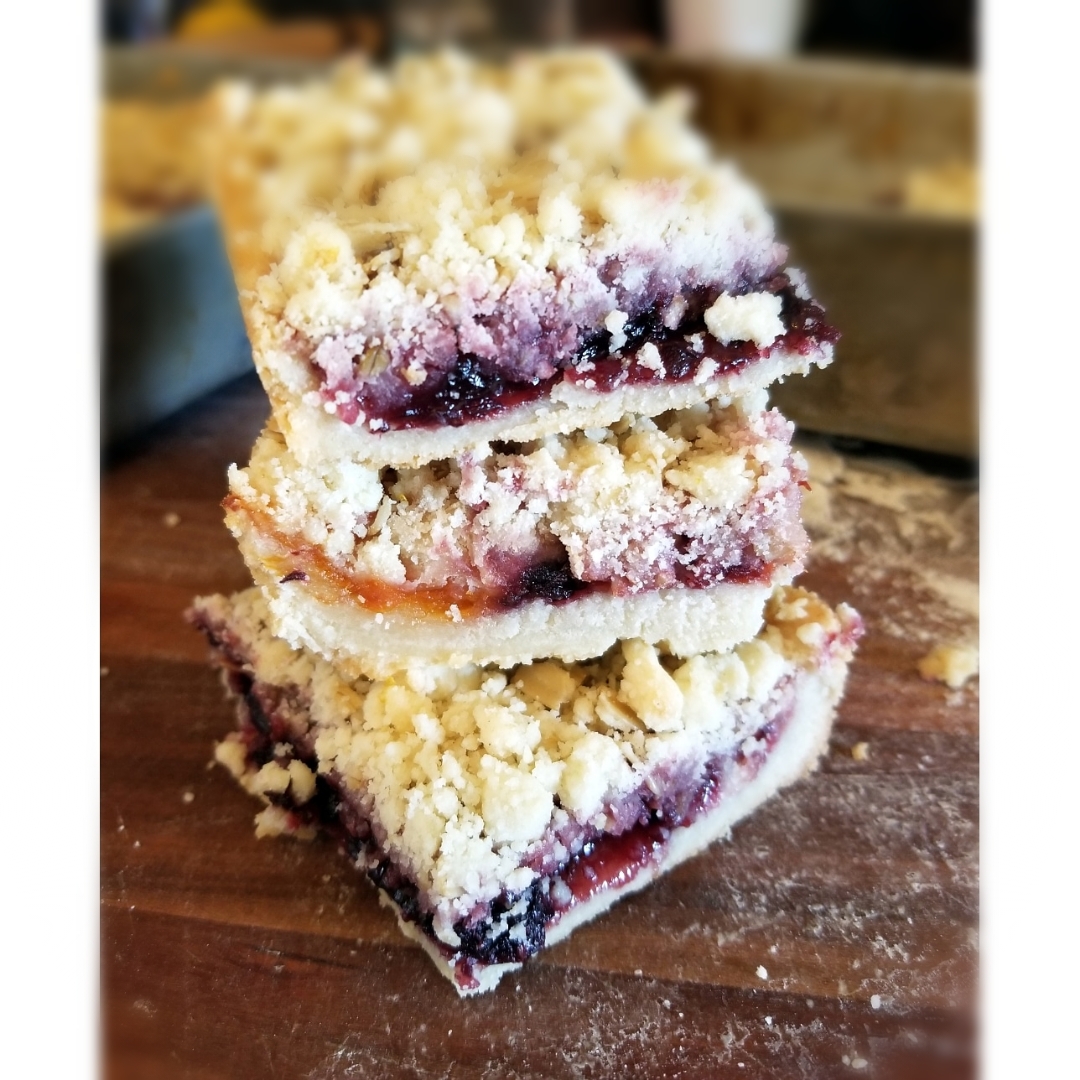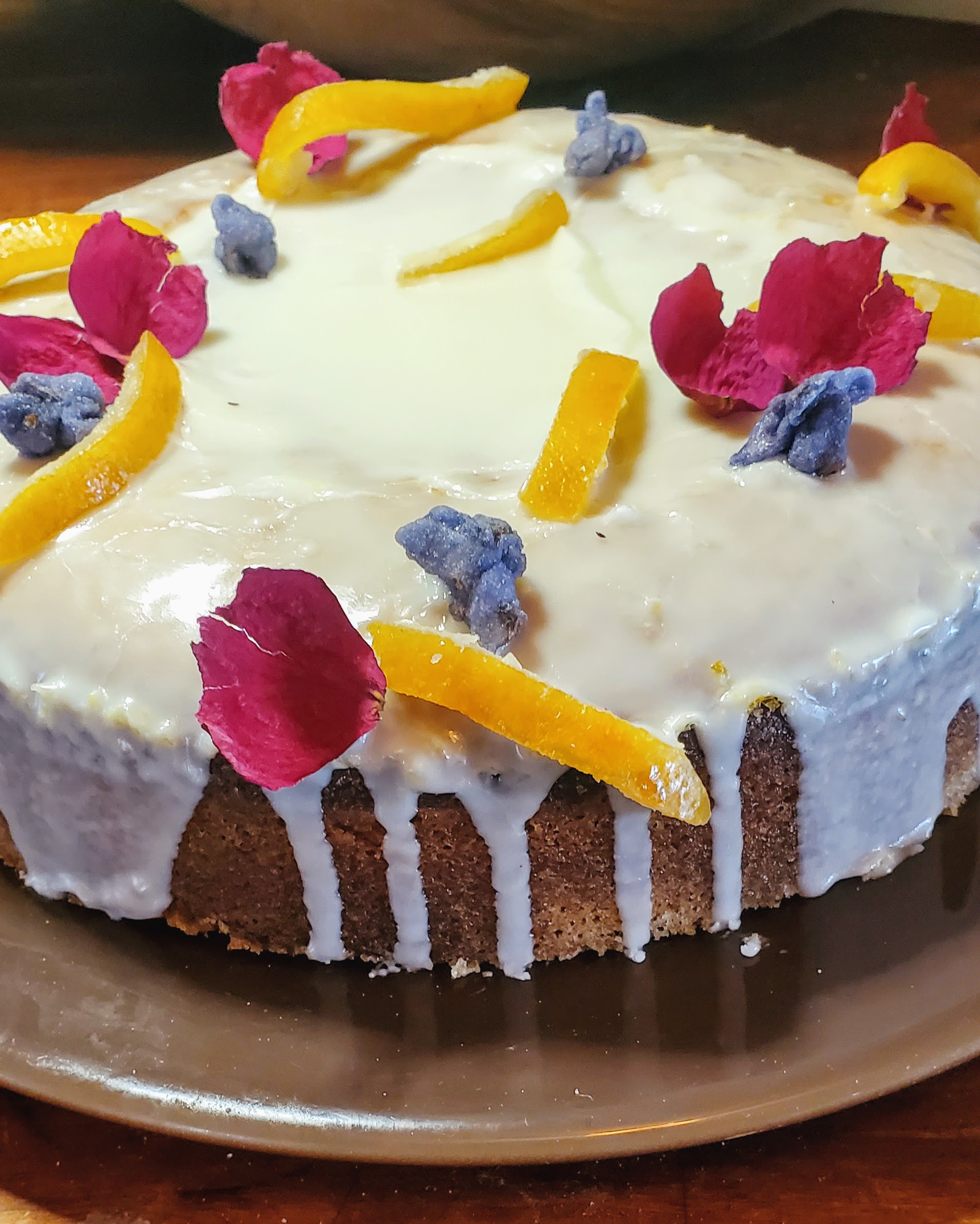
Olive Oil & Limoncello Cake
On March 22, 2022 by Christy LarsenWhen I have guests over for a meal or celebration, I am cognizant of dietary desires and restrictions. I don’t specifically design the menu around the issue, but I always make sure there are dishes served that everyone can enjoy. Dessert can be problematic, which is why I love an olive oil cake. While it doesn’t work for everyone, it is great for those with a dairy allergy. It is my go-to when I am trying to please a crowd. Best part; it can look festive and celebratory without being an elaborate layer cake. Single-layer cakes are my best friend.
Don’t let the additional components of a sop and icing deter you from trying this cake. It is a delicious addition to any celebration, or a mid-week tea and cake sesh. The addition of Limoncello (or any citrus cello) gives it a bit of an adult edge and sophistication.
for the cake:
3 extra-large eggs
1 cup + 2 Tbs granulated sugar
1 tsp kosher salt
1 Tbs lemon zest
1 1/4 cup olive oil (the less bitter, the better)
2 cups all-purpose flour; sifted
1/3 cup fine cornmeal
2 tsp baking powder
1/2 tsp baking soda
6 Tbs fresh lemon juice*
3 Tbs limoncello (or any citrus-cello)
2 tsp vanilla extract
*depending on the flavor profile you desire, you can substitute orange, grapefruit or lime (or a mixture) for the juice. Lemon packs the most punch, but you can play around. Make sure whatever you use compliments the liquor (lemon or citrus-cello).
Prepare your 9” springform cake pan by spraying with pan spray, lining the bottom with parchment, then spraying with pan spray again. Dust with granulated sugar; tapping out the excess. Preheat oven to 350.
In a stand mixer fitted with whisk attachment, beat eggs, sugar, salt, and lemon zest until they are pale yellow and reach ribbon stage (about 3-5 minutes). While whisking, slowly pour in olive oil. Whisk on medium/medium-high for another 2-3 minutes.
Meanwhile, whisk sifted flour, cornmeal, baking powder, and baking soda in a separate bowl. Measure the lemon juice, limoncello, and vanilla extract together.
With the mixer on low, alternate adding the dry ingredients (flour, cornmeal, etc) with the wet (lemon juice, limoncello, etc) beginning and ending with dry. Take care to not overmix
Pour into prepared pan and bake for approximately 50-60 minutes. It may take less, it may take more. I make a habit of checking after 45 minutes. It will brown a bit because of the sugar lining the pan; use a tester to make sure it is fully baked before removing it from the oven. The cake should be just firm to the touch.
While the cake is baking, make the sop syrup
for the sop syrup:
1/4 cup lemon juice (or other if you are changing it up)
1/2 cup granulated sugar
2 Tbs olive oil
Simmer the lemon juice and sugar over low heat until it starts to thicken to the consistency of cough syrup. Remove from heat and allow it to cool slightly. Pour 3 Tbs into a separate bowl and add the olive oil. Set aside the remaining to use in the icing. Pour the syrup/olive oil mixture evenly over the cake immediately after removing from the oven.
Make icing while the cake cools
for the icing
1 1/2-2 cups powdered sugar
1 Tbs agar-agar (optional)**
remaining sop syrup
limoncello
cream or water (if going dairy free)
**using agar-agar helps the icing firm up quicker than if you do not add it. It is an old doughnut shop trick. Be careful as sometimes it firms up so quickly that you can’t get your decorations on fast enough! Agar-agar is derived from algae and can be an allergen for some.
Stir the powdered sugar and agar-agar until fully incorporated. Add the remaining sop syrup. Use limoncello and cream (or water) to create desired consistency. Pour over slightly warm (for a less opaque glaze) or cooled (for thicker and more opaque icing) cake allowing it to over the sides. Decorate as desired.
The cake pictured is decorated with dried rose petals, candied orange peel, and candied violets.
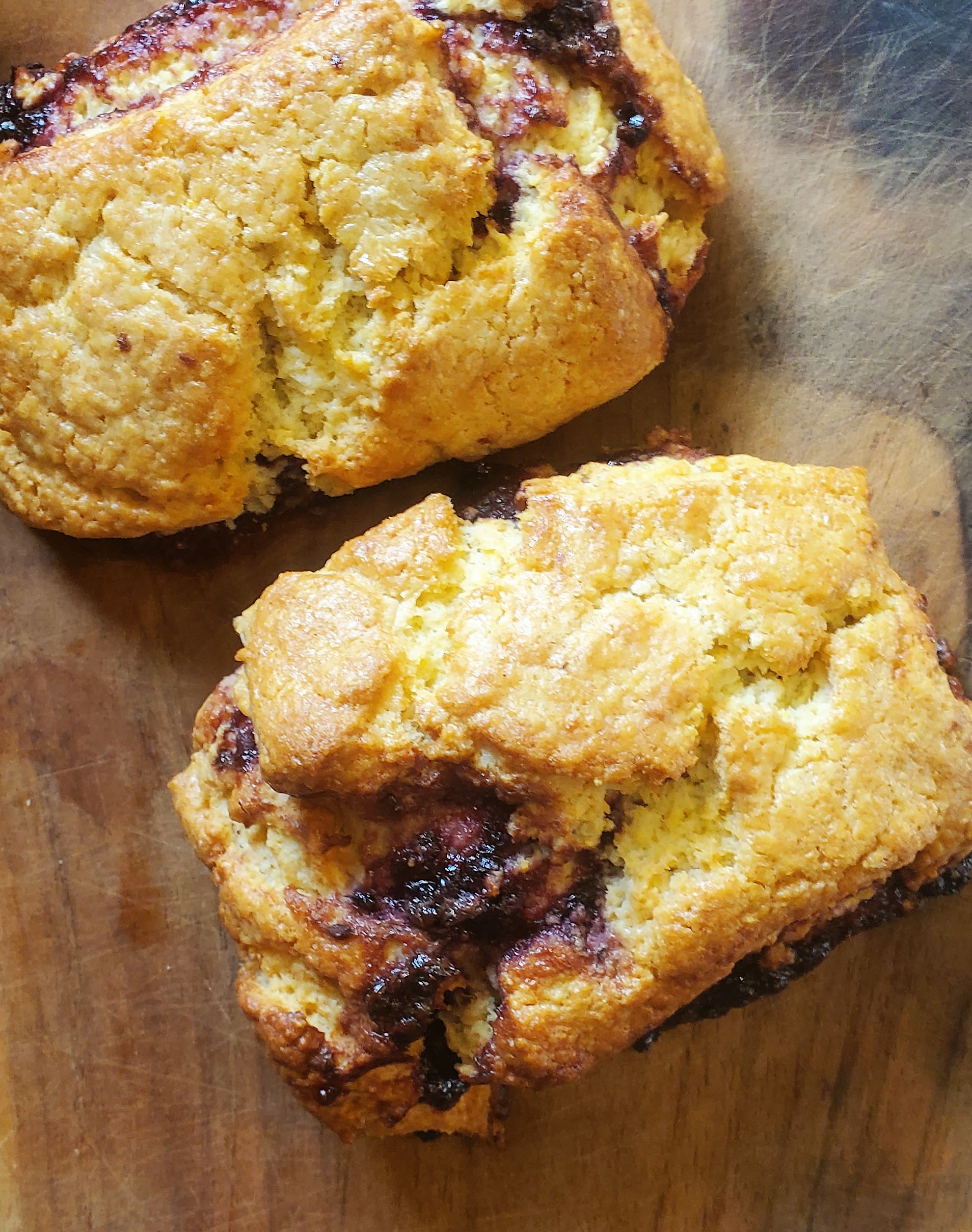
Jammy Cornmeal Scones
On November 24, 2021 by Christy Larsena not so traditional take on a tea-time treat
I started making these scones on a bit of a whim. While I still love a traditional scone with a heavy guild of clotted cream, these are a bit more rustic and perhaps more suitable for the palace staff, than the Queen. They are beautiful in an “I’d like to stuff my gullet with those” way rather than the polished silver variety. They are my go-to when I am limited in time, or jonesing for a brunchy treat. The key to these scones is a good jam. Best to have something that sits on the tart {not too sweet} side and if possible, homemade {by someone}. I’m not going to start the recipe with, first plant a bramble bush. But if that is your vibe, circle back in about a year and proceed.
Another thing to note is that you may use cornmeal of any grain size for this, but do not substitute cornstarch/cornflour.
Scone Recipe
yields 6-8
1 3/4 cups all purpose flour
1/4 cup cornmeal*
1 Tbs + 1 tsp baking powder
1/3 cup granulated sugar
1 tsp ground ginger**
3/4 tsp kosher salt
6 TBS unsalted butter–cold and cut into small pieces
3/4 cups heavy cream
1 large egg
approx 4-6 oz tasty jam
*I switch my cornmeal based on what I have available. A fine grind will give a fluffier texture, while you can get a bit more crunch from a medium grind. I have not tested a coarse grind for this recipe.
**I swap my spices based on the flavor of jam. Because I use homemade jam, I am able to enhance the flavor by using the same spices in the scone as I had in the jam. Substitute spices to your taste but try and keep it at a maximum of 1 1/2 tsp in total, otherwise, you run the risk of competing or overpowering flavors.
In a bowl whisk together the flour, cornmeal, baking powder, sugar, salt, and ginger (or preferred spice). Rub the butter in by hand until it is well distributed throughout. Measure out the cream and whisk in the egg. Make a well in the center of the flour/butter mixture and pour in about 3/4 of the cream/egg mixture. Use a fork to stir and moisten. Only use enough of the cream to bind the ingredients, you do not want a sticky dough. Occasionally when I make these, I do not use all of the cream, sometimes I have to add more. You are looking for the texture of a pie crust or rolled sugar cookie (without refrigeration).
Move the dough onto a floured board and do not fuss with it too much. You don’t want to overhandle…but it isn’t as fussy as pie crust. With a floured pin, roll out to an even rectangle about 1/2″ thick.
Evenly spread your jam onto the entirety of the rectangle. Fold the rectangle into thirds on the long end a la envelope fold. Brush with any remaining cream/egg mixture (use more cream if you don’t have extra), cut into rectangles, and bake for 15-20 minutes at 400 {375 if convection} until golden on all sides (particularly bottom) and oozing jam.
what?!
here…look at this incredibly ridiculous attempt at using graphics to show you what I mean.
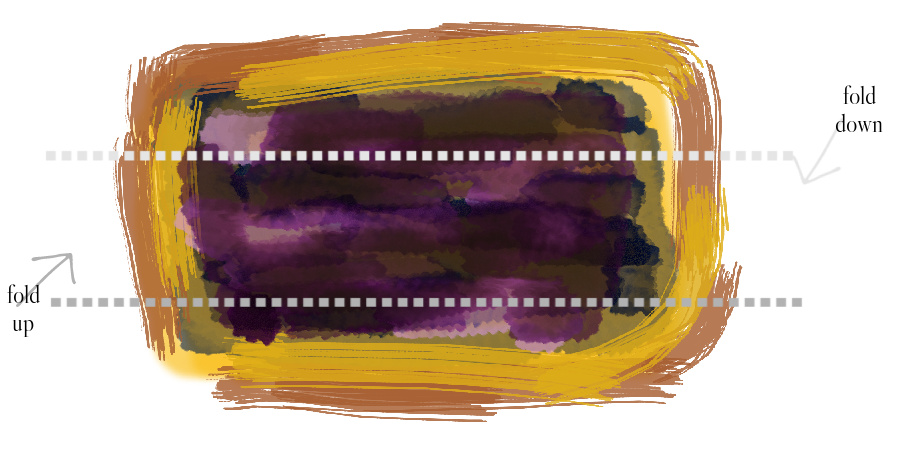
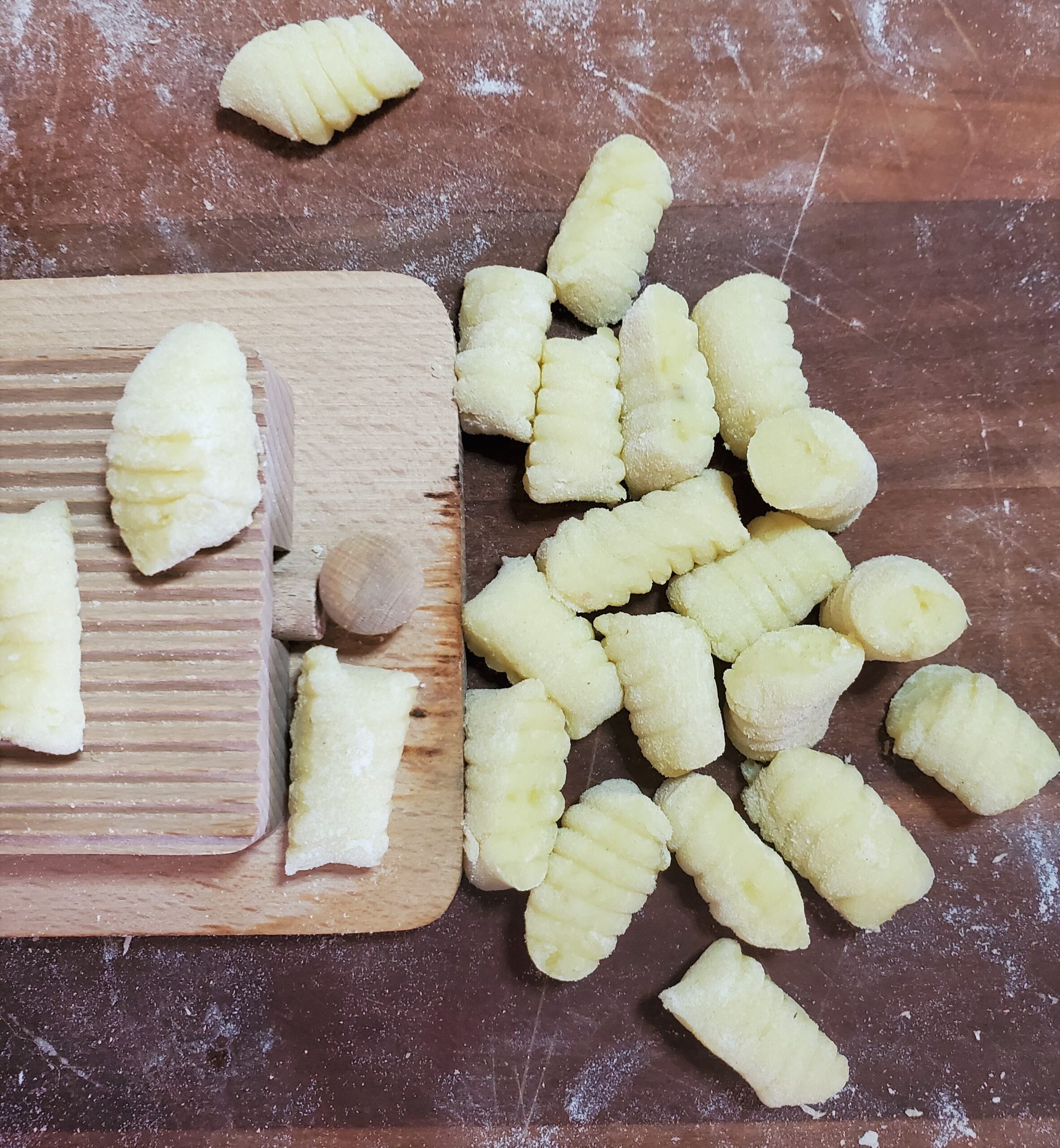
Homestyle Gnocchi
On April 29, 2021 by Christy LarsenNo big story (although there is always a story) to have to muck through to find out the deets on this one. This recipe is so simple you are going to wonder why you don’t have gnocchi every night of the week. I’m all for that, by the way! Here’s the ‘sitch—
You can scale this up and down based on how much you want to make, or how many potatoes you have in the pantry. Here is what you need to know. There are 3 ingredients to this–potatoes, 00 flour, and salt. The recipe is a ratio 10:1 + a pinch by weight. 10 parts cooked potato to 1 part 00 flour plus 1 nice pinch of kosher salt. I suggest that you make a minimum of 200 grams potato, which is nice for a giant personal batch or a starter serving for 2.
To cook the potatoes, you can peel, cut into chunks and boil in salted water…or you can peel and cut in small chunks, place in a small bowl, add a quick splash of water and a pinch of salt. Cover with plastic wrap and place in the microwave and cook for 3 minutes. Check to see if they are very soft, and if not cook one more minute at a time until the potatoes mash at the push of your thumb. While they are still hot, weigh and mash. You can use a fork for a very rustic approach, or a food mill for a more refined mash. Add 10% 00 flour (by weight) of the potato. If you have 200gr potato, you will have 20 gr 00 flour. Add another pinch of salt and mix together. Knead everything until you have a nice pliable dough.
Roll the dough into a long snake about 1/2″ thick. Cut the snake into squares and then use a fork or a ridged board to make marks into the dumplings and set aside.
Boil 4-6″ of water in a medium pot. Throw a couple of gnocchi in the hot water to test the structure and salinity. Allow the gnocchi to pop to the surface of the water, then wait a beat. Remove from water and taste to see if you need to add salt to the boiling water. Add salt if necessary.
Boil the rest in small batches, removing with a slotted spoon. Set aside while you make your favorite sauce. Reheat the gnocchi in the sauce to heat through.
You can refrigerate or freeze the leftovers–sauced or not.
Ahh….the internet
On April 24, 2021 by Christy LarsenWe have been having some challenges here with this site. It was down for quite a while because of a coding error and we couldn’t get back in to fix it. Mike (my wonder-hub) figured out a back door and was able to reboot the site and remove the offending code. However, I did lose some blog posts and photos with the reboot. I am in the process of trying to figure out what is missing, and reviewing each page to make sure there aren’t any other issues. It will take a while, as I sadly don’t have large swaths of time to devote. However, I am working on it! If you are a blog subscriber, you may receive multiple notifications of new posts, and some may seem redundant. For that I apologize in advance. Hopefully, we will soon have it all wrapped up in a pretty little bow for you again!
All the best and thanks for following along
Christy, your sixty acre baker
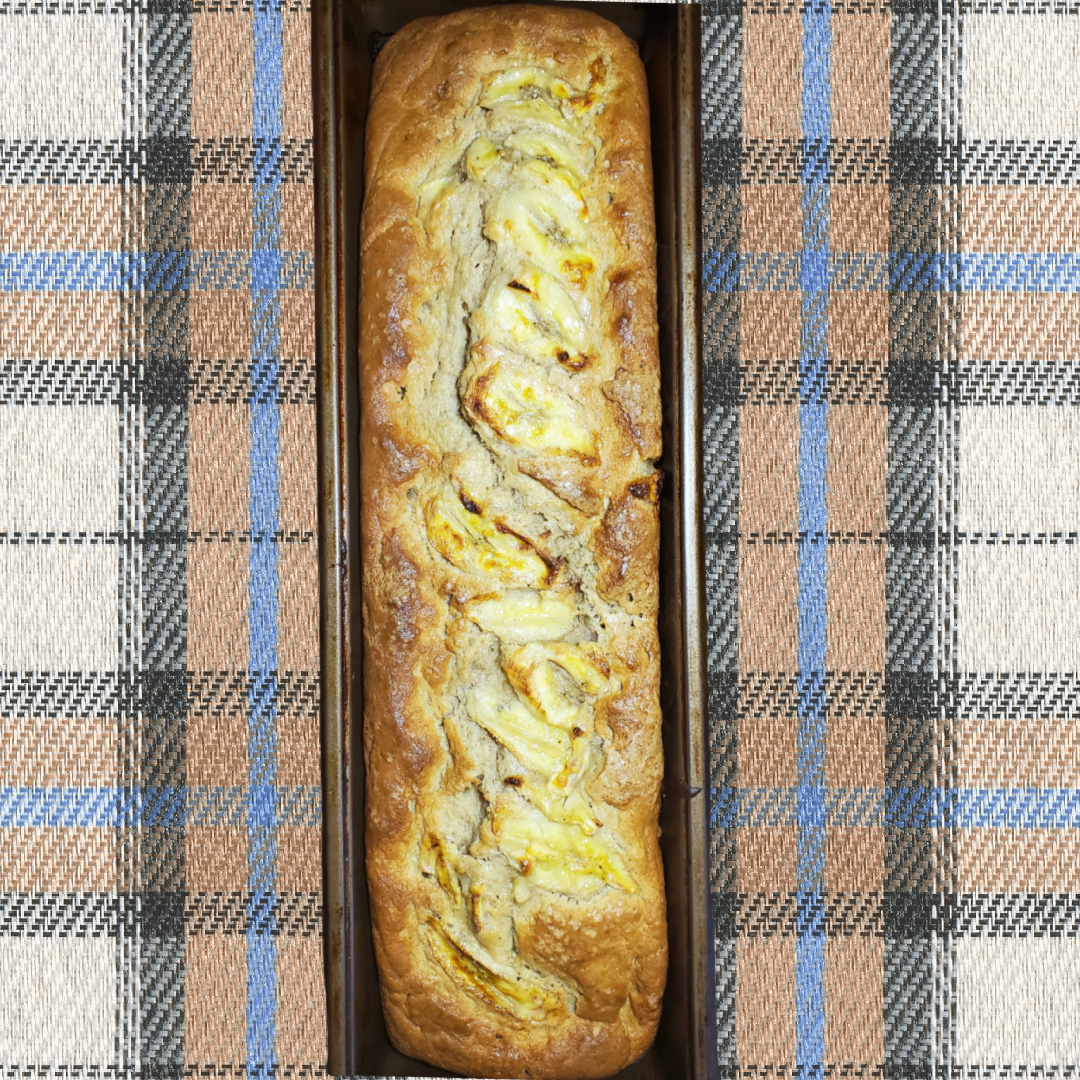
Banana Bread
On October 26, 2020 by Christy LarsenAs 2020 pandemic isolation progressed into the sweet spot between, I finally have time to make all the things, and I am so sick of cooking (and eating), everyone seemed to be making banana bread. As a contrarian, the more popular it became, the less I wanted to make it. Now that it seems to have lost its popularity, I’ve decided I want back in the game.
While traveling in Hawaii, over a decade ago, Mike and I got a real taste of what an obsession with banana bread can lead to.
On the island of Maui stretches the Road to Hana, and it is lined with banana bread. It is a picturesque and windy road dotted with roadside stands; each selling the “island’s best” banana bread. Each recipe touted as unique and handed down for generations. As we slowly took each curve and marveled at the waterfalls and dense tropics, we made a plan to stop at every roadside stall bar none. At the end of the day, we tried all the versions of banana bread, a few juices, and a sugar cane. Each bread was indeed different, and they all were tasty.
I just love the idea of taking a few ingredients and manipulating them to your specific taste. I knew upon coming home that I would be creating a banana bread recipe of my own. The beauty of a banana is that it is perfectly delicious when just yellow and still a bit starchy as a snack or embellishment to any number of other foods. As it continues to ripen (and rather quickly, I might add), it becomes soft and sweet and a much loftier version of its young self. We are so lucky to be able to follow this fruit throughout its lifecycle. I am continually stashing them in my freezer for all sorts of uses.
My version of banana bread is dense and wholesome and carries with it a bit of gravitas. It is made better by slicing, toasting, and topping with a whipped schmear of peanut butter, cream cheese, and a bit of honey which we lovingly call “the elvis”.
1/2 cup butter–room temp
1 pkg cream cheese–room temp
1 cup light brown sugar–lightly packed
1/3 cup granulated sugar
2 large eggs–room temp
1 tsp kosher salt
1 tsp vanilla
3 large over-ripe bananas (about 1 1/2 cups mashed)
1 cup sour cream
2 3/4 cup all-purpose flour
1/2 tsp ground cinnamon
1/4 tsp ground nutmeg
1 tsp baking soda
1 tsp baking powder
1 1/2 cups toasted walnuts
1 ripe banana for topping (optional)
1 Tbs granulated sugar for topping (optional)
Cream the butter and cream cheese using the paddle attachment on your mixer. Add the brown sugar, granulated sugar, and salt and beat until light and fluffy. Add the eggs and vanilla and beat until fully incorporated, about 2 minutes…you do not want it to be light and airy, as you are making a dense, moist bread. Toss in the mashed bananas and again mix for about 2 minutes. Mix together the flour, cinnamon, nutmeg, baking soda, and baking powder together in a bowl. With the mixer on low, alternately add the flour and sour cream, beginning and ending with flour, in 3 parts. Stir the walnuts in by hand. Pour into 2 loaf pans (or a double long loaf pan) that have been buttered and floured. Thinly slice the (optional) banana and place on top of the batter. Sprinkle lightly with granulated sugar. Bake in a preheated 350 oven for about 50 minutes or until a toothpick inserted in the center comes out clean.
*note: the spices of cinnamon and nutmeg are not clearly noticeable in this recipe, they just give the cake a bit of depth. if you love the taste of either one, you can increase as you see fit. I like the roundness a bit of spice gives without it overpowering the banana flavor.
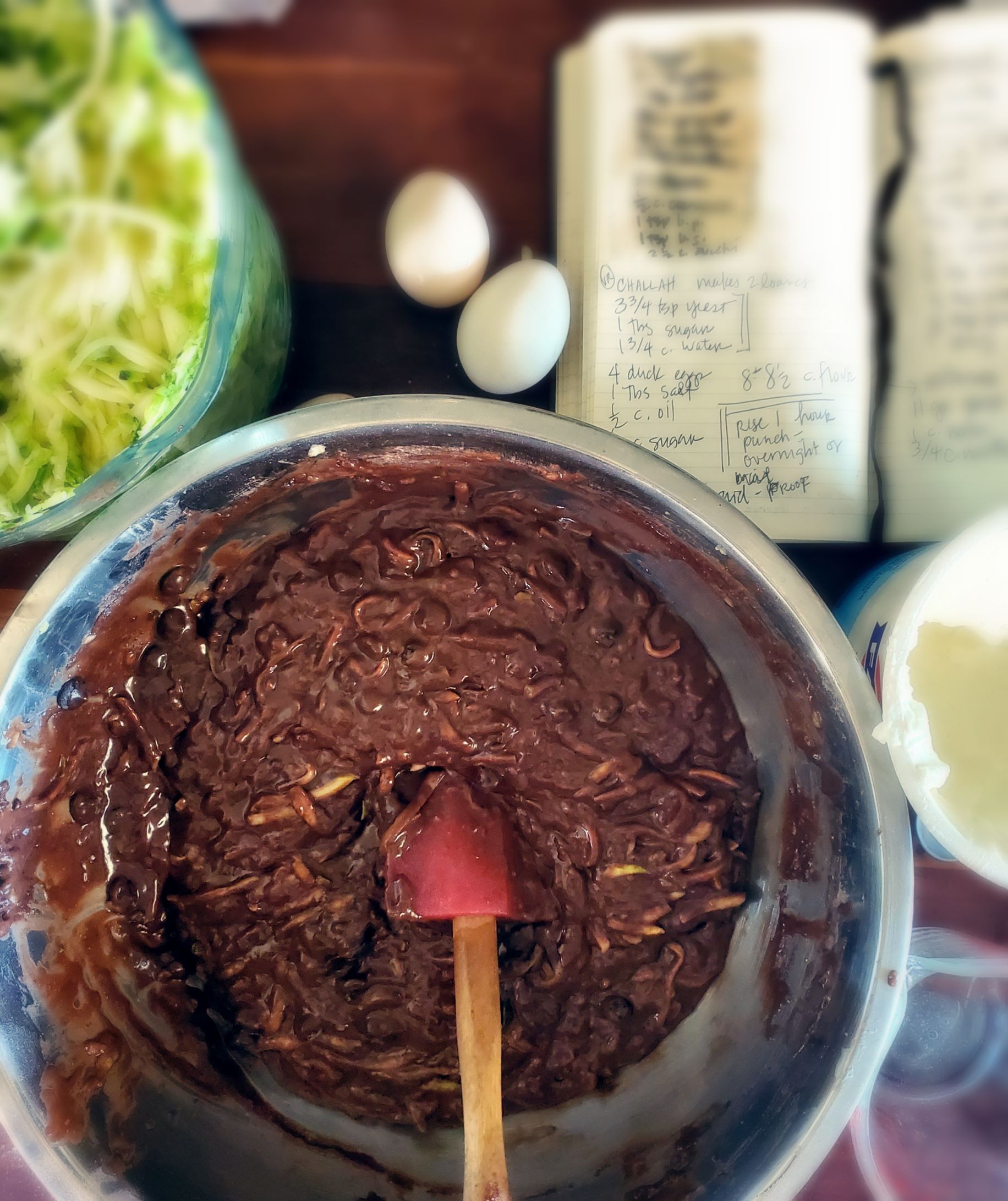
Chocolate Zucchini Cake
On July 17, 2020 by Christy LarsenI must admit that the provenance of this recipe or idea of it anyway came from elsewhere. I have been making it for so many years and have futzed with it along the way, that I have no idea where it all started. It has become a favorite of ours and our farm stand guests mostly because it lives under the guise of being healthy. You know, with it being loaded with veggies and all.
We grow a ton of zucchini here. This is a story told by anyone who successfully grows zucchini. We are all trying to unload our bumper crop by mid-summer to anyone who makes eye contact. It is a prolific and delicious vegetable that is difficult to stay ahead of. Now that I grow my own, I am always amazed at the perfect (and small) grocery store versions of them. I imagine they must pay people to sleep in the field with a ruler in hand and harvest at just the right moment. Mine are always imperfect and sometimes downright giant. This cake is filled with grated zucchini. It can be a perfectly beautiful one or a monster from your garden, but I do recommend that you have more flesh than seed when grating.
The recipe calls for oil and duck eggs. I have had success using vegetable oil, olive oil and lard. I have not made this recipe with butter, nor have I substituted apple sauce and cannot endorse either. As for eggs, I use duck in most of my baking. For this rustic cake, I would use large or extra large chicken eggs if you cannot find duck. If you cannot find large or extra large, you can use what you have. It may alter the result, but it shouldn’t ruin it. If that just won’t work for you, look up the weight (liquid weight) of a, extra large chicken egg, multiply by two and then weigh the eggs you have until you get to the number you need. If you end up needing only half of your egg–whisk it before measuring. Baking is a science, but its not a science fair.
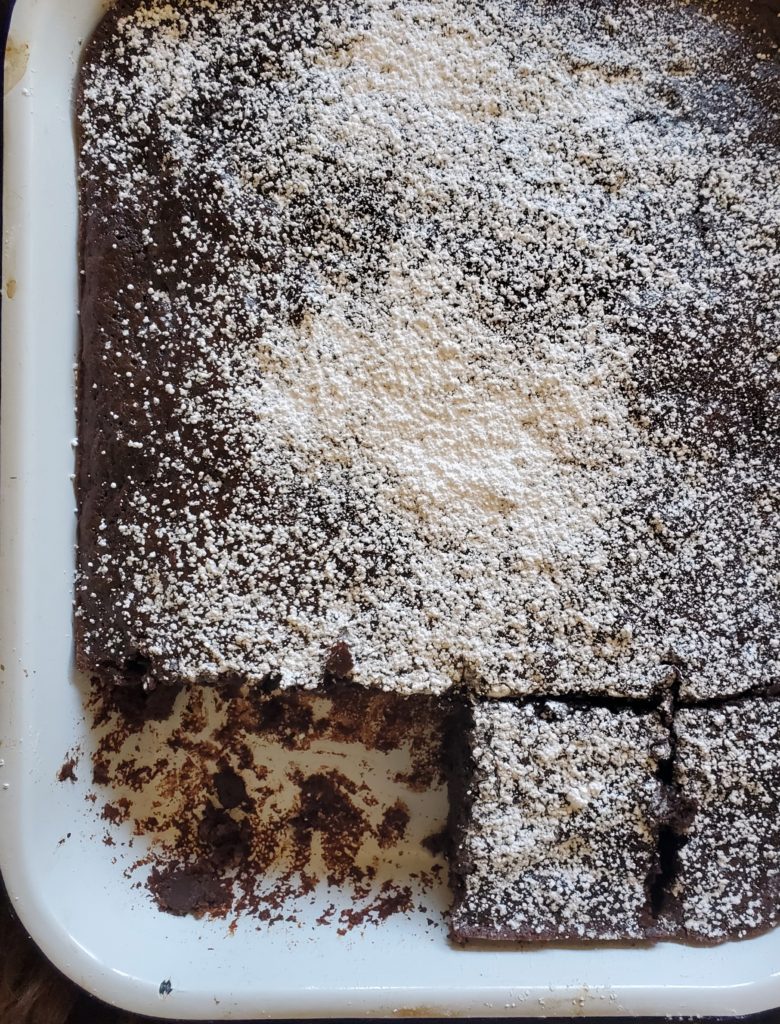
You will want to sneak this into your lunchbox on-the-daily despite it being loaded with veggies
Chocolate Zucchini Cake
2 duck or extra large chicken eggs
2 cups granulated sugar
1/4 cup lard (melted) or oil of your choice
2 tsp vanilla extract
3/4 cup plain yogurt
1 tsp kosher salt
2 cups all-purpose flour
1/2 cup cocoa powder
1 tsp baking powder
1 tsp baking soda
2 1/2 cups grated zucchini
1 1/2 cups bittersweet chocolate chips (you can add more or less to your individual taste)
powdered sugar for decoration
Prepare an 8×13 high sided baking pan with vegetable spray or butter and preheat the oven to 350F.
In a large bowl, whisk the eggs and sugar together until they are well incorporated and they begin to lighten. Add the lard (or oil) and whisk until fully emulsified. Whisk in the yogurt and extract and give it a good 30-second workout. Switch to a wooden spoon or spatula and stir in the salt, flour, cocoa powder, baking powder, and baking soda. Do not over mix, but make sure everything is incorporated. Stir in the zucchini. If your cake mix is stiff, add up to 1/4 cup of water to help loosen. You do not want it to be runny, it should be the consistency of warm pudding. Add chocolate chips and tip into your baking tin. Bake for approximately 45-50 minutes. It is done when the top is resistant to your touch or a cake tester comes out clean. Remove from heat and allow to cool. Sift a bit of powdered sugar on top and serve straight from the pan. a
If I am to be honest, this cake gets about a 30-minute respite in our house. It is lovely served warm accompanied by a cold glass of milk
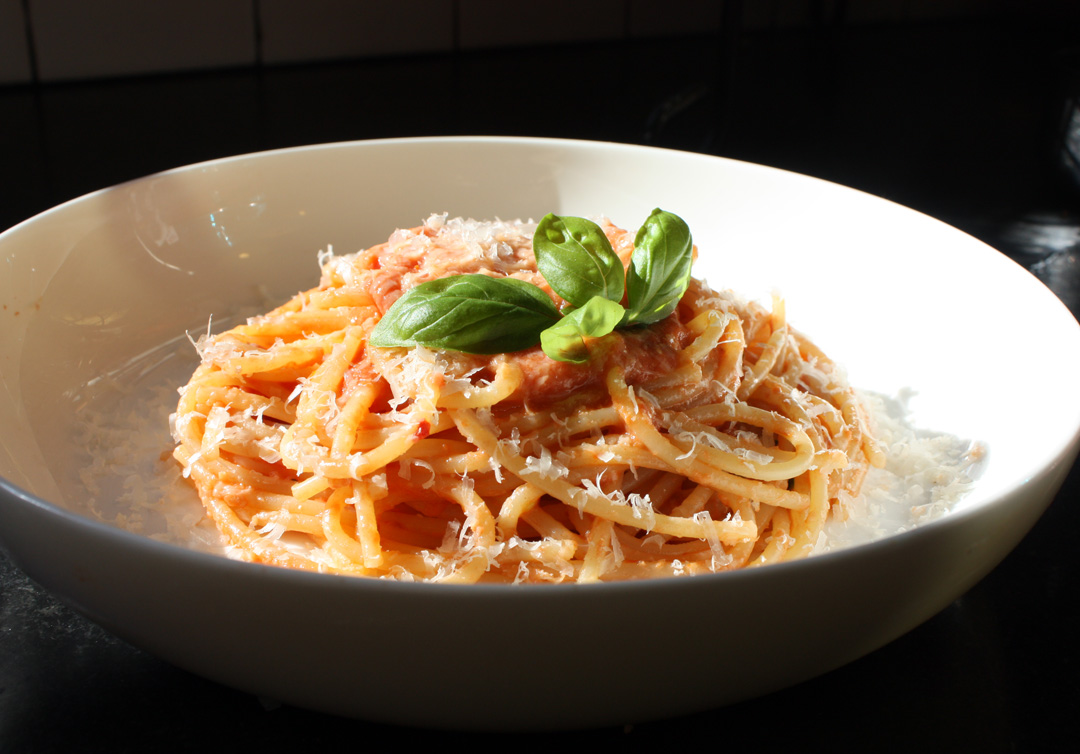
Spaghetti alla Vodka
On March 20, 2020 by Christy LarsenMy grandmother was famous for her alla vodka but not exactly like this. For one thing–she was a traditionalist and used penne. She also didn’t make her own tomato-infused vodka because she was a widow raising kids, with limited amount of time on her hands. Not all sorts like I do (she says with her tongue firmly in cheek). Our garden produced so many late harvest tomatoes that I found myself using them in a variety of ways; sundried, oven-roasted, confit, and soaked in vodka.
Tomato Infused Vodka
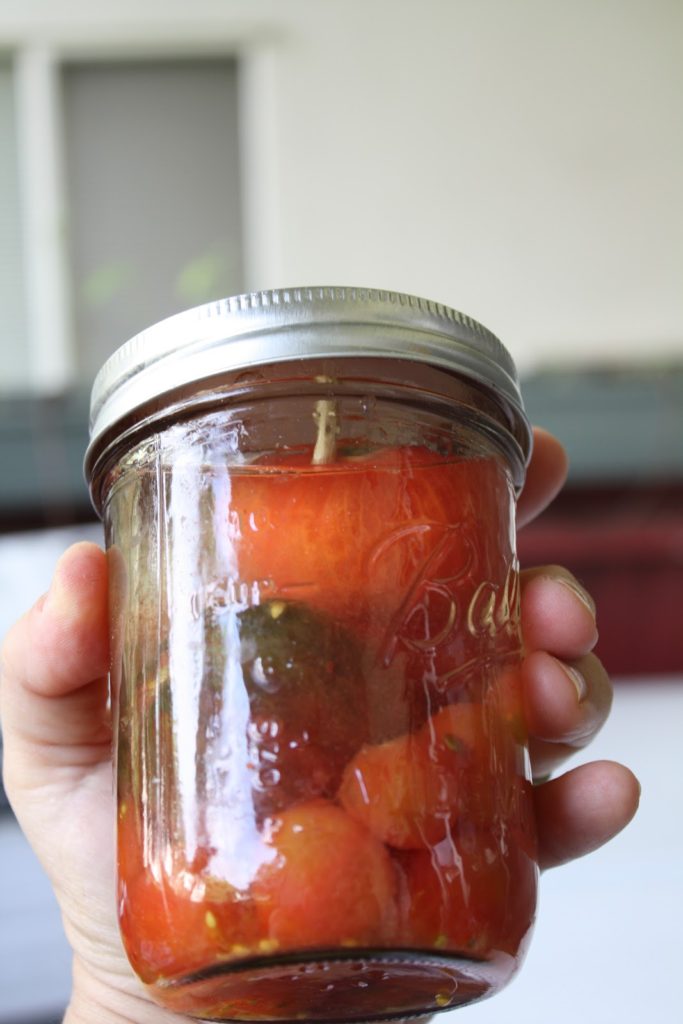
This is really simple. Peel tomatoes and cram into a jar, use a skewer to secure tomatoes if they start to float to the top. Fill the jar with vodka and store in the refrigerator for at least 5 days. I make several jars because I like to use the tomatoes and the vodka for my sauce. Leftover vodka is really great for a bloody mary.
Alla Vodka
1 lb spaghetti or pasta of choice
olive oil
1/2 of small onion–finely diced
2 garlic cloves–finely diced
6-8 basil leaves–chiffonade
1 large tin peeled whole tomatoes or combination of vodka soaked tomatoes and tinned tomatoes to equal about 4 cups whole
1/2-1 tsp crushed red pepper flakes
1/2 cup tomato soaked vodka (or another vodka you have on hand)
1/2 cup heavy cream
1/4 cup grated parmesan plus more for serving
Cook pasta in salted water, according to package instructions. Saute onions and garlic in olive oil over low heat, careful not to brown, but allow to get translucent. Meanwhile, place the tomatoes in a food processor or blender and pulse until smooth. When the onions and garlic are ready, add the tomatoes and vodka and let simmer for about 10-15 minutes. Add the basil, red pepper flakes, and heavy cream. Allow to heat through then stir in parmesan, and toss in the drained pasta. If the sauce seems too thick, use a bit of the pasta water. Shave a bit of parmesan on top of each individual serving, along with additional crushed red pepper, if you like spicy.
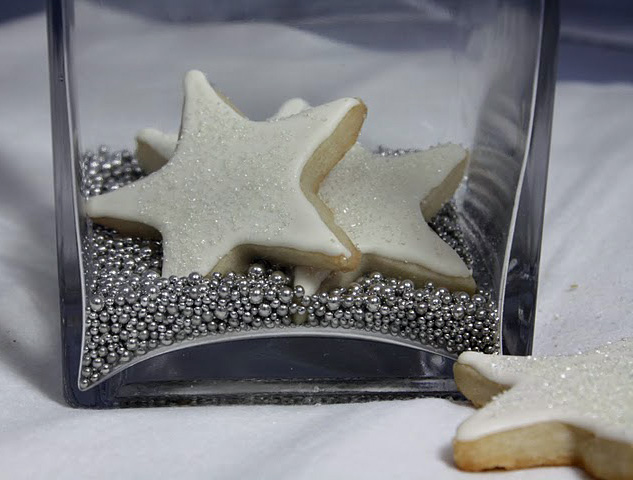
Iced and Snowy Stars
On March 15, 2020 by Christy Larsen I love this shortbread recipe and use it shamelessly whenever I can. Every Christmas my mom would bring out special cookie cutters. The ones she used for shortbread. The mystery still remains why they were shaped like playing card suits and; how”spades” and “diamonds” scream Christmas I never thought to ask
perhaps I should have
She rolled the dough out thicker than usual, slightly underbaked them and half-dipped them in chocolate. They are perfect that way and are still my favorite way of eating them
They are also delightful rolled a bit thinner and baked a bit longer. When glazed with ivory tinted royal icing, and flavored with a bit of almond they are the best accompaniment to your morning cuppa.
Shortbread Cookies
1 cup butter–room temperature
3/4 cup sifted powdered sugar
1 tsp vanilla extract
1/2 tsp salt
2 cups flour
Beat sugar and butter until completely mixed together, but not light and fluffy. Add vanilla and salt and mix until just incorporated. Slowly stir in flour and only mix until just incorporated. Divide dough in 2 portions, wrap in plastic and place in the refrigerator for a few hours or overnight. When ready to bake, roll out and bake on parchment paper. Top with sprinkles or leave plain and bake at 325 until just starting to brown on the bottom. Once cooled you can dip in tempered chocolate or glaze with royal icing (alton brown recipe here), flavored as you choose.
Just a simple tip: I glaze the cookies using a pastry bag and let them dry. I then dip a small paintbrush in a bit of Everclear or vodka (or you can use extract) and gently swipe it across the top. I then immediately sprinkle the sugar on top. the liquid will evaporate almost immediately–but it will allow your sugar to stick without sinking into the icing.
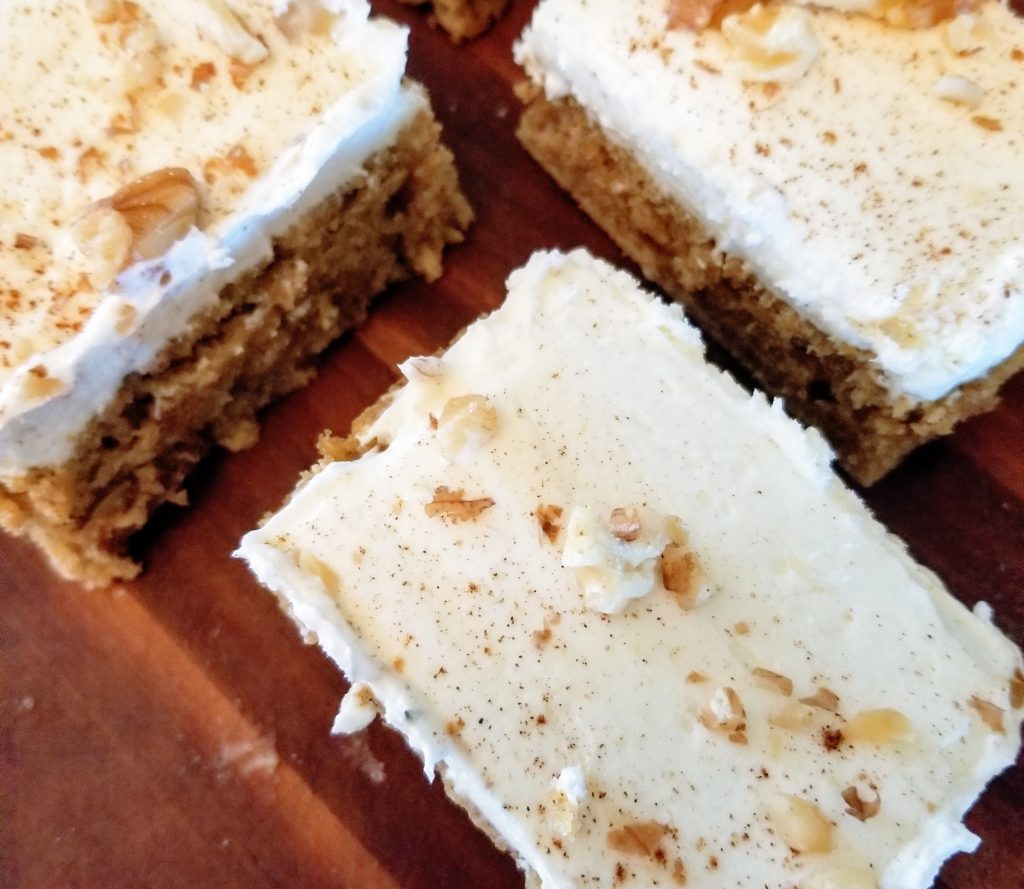
Parsnip Spice Cake
On March 4, 2020 by Christy LarsenLiving in California affords us a “winter garden.” All my favorite roots and brassicas are thriving in our cold, but not bitter-cold, temperatures. The other day, I found myself with dirty nails and an armload of parsnips.
After a few snaps of frost, parsnips (left in the ground) can become quite sweet and are a delicious addition to a cake heady with spices. Mostly because I can, I like to ice this cake with a nice thick cap of snowy cream cheese frosting, a sprinkle of spice and just enough walnuts to let people know it is a nutty cake.
While you can play with the pan size to make it quite high, throw into a loaf, or double to make a lovely layer cake, I like it best when it is unfussy and almost more of a slice than a cake. This way, as I reach for my second helping, I don’t feel nearly as gluttonous. After all, it does contain a vegetable.
Before you get started, I need to talk to you about the frosting. You may hate me for this, but in my not so humble opinion, cream cheese frosting should taste like cream cheese, not like sugar. This is why my recipe has a “to taste” caveat on it. I start very slow with the sugar and add as I see fit. Yes, it should be sweet, but just at the mark of sweet, not sugary sweet. You can disagree with me and pile the sugar in, it’s your choice, but I think you will be just as happy with something that has a nice tangy kick to it.
This cake recipe is adapted from Bon Appetit 2006
Parsnip Spice Cake with Cream Cheese Frosting
CAKE
1 1/2 cups all-purpose flour
1 cup granulated sugar
2 tsp baking powder
1 Tbs ground ginger
1 1/2 tsp ground cinnamon
1 tsp freshly ground nutmeg
1/2 tsp ground clove
1/2 tsp ground allspice
1 tsp kosher salt (i prefer diamond crystal)
3 large or extra-large eggs (duck eggs work great)
1/2 cup olive or vegetable oil
1/2 cup whole milk
1 tsp vanilla extract
2 cups grated parsnip–grated on small holes of a standard grater–packed down
1/2 cup walnut pieces–toasted
Place all of your dry ingredients (including sugar) in a bowl. In another bowl whisk together the eggs, oil, milk, and vanilla. Pour into the dry ingredients and whisk until just incorporated. Stir in parsnip until incorporated, then stir in walnuts.
Pour into a pan of your choice (13×9 makes a cake that is about 1 1/2 inches thick). To prepare your cake tin, grease, then line bottom with parchment paper (i also cut strips for the side of the pan for extra insurance), then grease again. Bake at 350F until done (top is springy) about 25 minutes. I set my timer at 20 minutes and check, then add minutes or pull out of the oven if finished. NOTE: A loaf pan and/or smaller pan for thicker cake will take longer because of less surface area. Please keep this in mind. Let cool completely on baker’s rack.
FROSTING
16 ounces cream cheese–room temperature
8 ounces unsalted butter–room temperature
generous pinch kosher salt
1/4 cup toasted and chopped walnuts
a pinch of cinnamon
a pinch of ginger
powdered sugar to taste (start with 1 cup and add 1 tablespoon at a time)
Using the paddle attachment on an electric mixer, cream the butter and cream cheese until fully incorporated. Add the salt and mix again. Add powdered sugar and mix until completely incorporated. Check for sweetness and add more sugar if desired. Mix until it is light and fluffy. Place into a large piping bag. Cut the tip off the bag giving you approximately an 1/2″ hole in the end and pipe even lines across the cake. Use a spatula to smooth the frosting, careful to keep at an even level. You are looking for a frosting layer of about 1/4 to 3/8 of an inch. Sprinkle the cinnamon, ginger and walnuts over the top.
NOTE: If you are a warm cake fan and like to serve dessert in the vein of an English Pudding, you can serve this cake warm with a bit of custard or double cream. Alternatively, you can use the cream cheese icing and let it melt into a puddle; it will be just as delicious.
